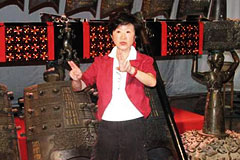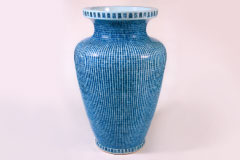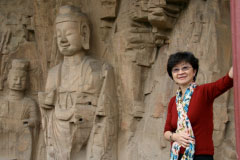West Kowloon Cultural District Authority
e-Newsletter
2012 / Sep Issue
Monthly Highlights
| Talking Art : Professor Jenny So Fong-suk | |
| Professor Jenny So Fong-suk, who is a member of the West Kowloon Cultural District Authority Board and its museum and performing arts committees, is a top expert in ancient bronzes. Her art profession started with an art history class over 30 years ago… Q: e-news So: Professor Jenny So 
Professor Jenny So lectured on ancient Chinese bronze bells in the Hubei Provincial Museum, Wuhan
So: In my junior and secondary years, I learnt very little about art back then as there were only music and performing arts in Hong Kong. I participated in choral speech and choirs at the annual Music Festivals for Diocesan Girls’ School. When I studied in the States, English literature was my major but I took a few courses in Art History, which brought me to the world of art. Q: Who were your mentors? So: Had it not been my Renaissance art professor Kaori Kitao, I would not have developed an interest in art. I studied at her school, Harvard University, with Max Loehr, a renowned professor and an expert in ancient bronzes and jades, with whom I spent 10 years for a doctorate. Q: How did they inspire you? So: They opened for me the door of history. Through visual objects I could see a “brave new world”. Visual art is a language: Once you know the language, you can communicate. That is why your first professor is very important. Always passionate, they know how to make the art interesting in class. 
Kangxi Emperor’s “10,000 shou-character” birthday porcelain vase in CUHK’s Art Museum
So: I’d say it is. Think of the Opium War, a major historical event, but it cannot be repeated or re-experienced. But you can still physically experience the First Emperor’s terracotta army from over 2000 years ago, or hold Tang Emperor Xuanzong’s “birthday” mirror in your hands, or see Kangxi Emperor’s “10,000 shou-character” birthday vase in the Art Museum at CUHK. Q: You were a curator in the States, how did you end up in Chinese University? So: When I returned to Hong Kong in 2001, I hope I could contribute what I know in art history, especially in Chinese art, and share my experience with the young people of Hong Kong. Chinese University has a top notch university museum, and that fits into my hands-on teaching approach. Q: Ten years on, how far have you achieved your goal? So: I believe we succeeded in promoting art research among youngsters. Our graduates - whether they are local or Mainland students - now works in Beijing Palace Museum and Fudan , Zhejiang, Sichuan universities in the Mainland, and locally in CUHK, PolyU, CityU, Baptist U, and the Hong Kong Museum of Art . The overall standard of art improved. Look at the Fotanian studios, which started when one of our professors led a group of students to move in… 
A visit to the Buddhist grottos in Henan
So: I hope I could retire in one or two years. Then I can spend more time on research or exhibitions. I hope I could still share with the youth in other capacities to promote art. Q: What are your expectations for WKCDA? So: When I looked back at the past four years, I felt we had done many things. We started from zero, if not negative, with zero staff. Later we hired Lars (Nittve) and began to build the M+ team, and that will be the making or breaking of M+. In the Performing Arts Committee, we had the first “West Kowloon Bamboo Theatre” show. When you are watching from outside, you may feel it has been a long wait. But if you were working from inside, you probably felt four years went by in a flash. |
|
| Prev | |